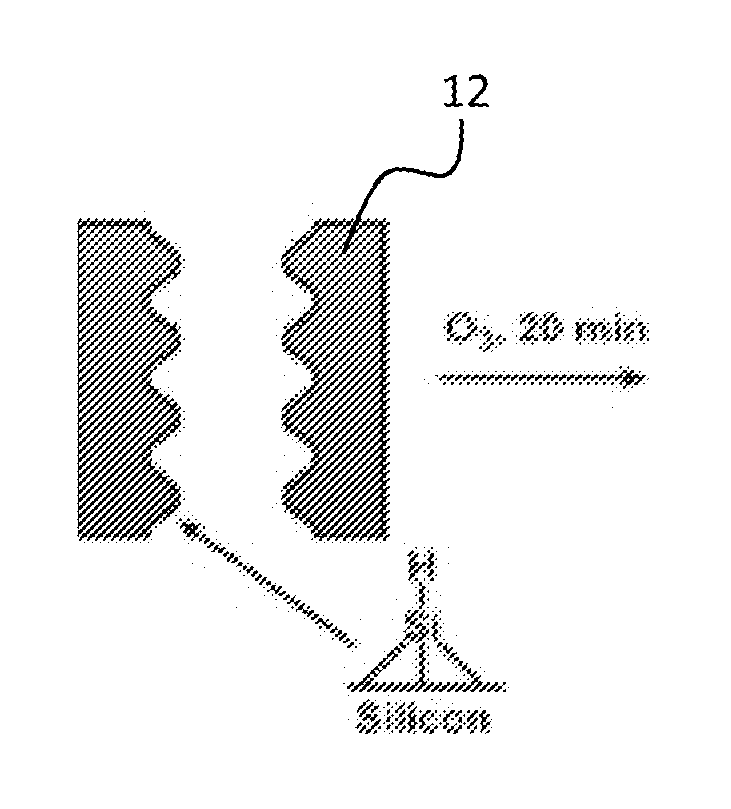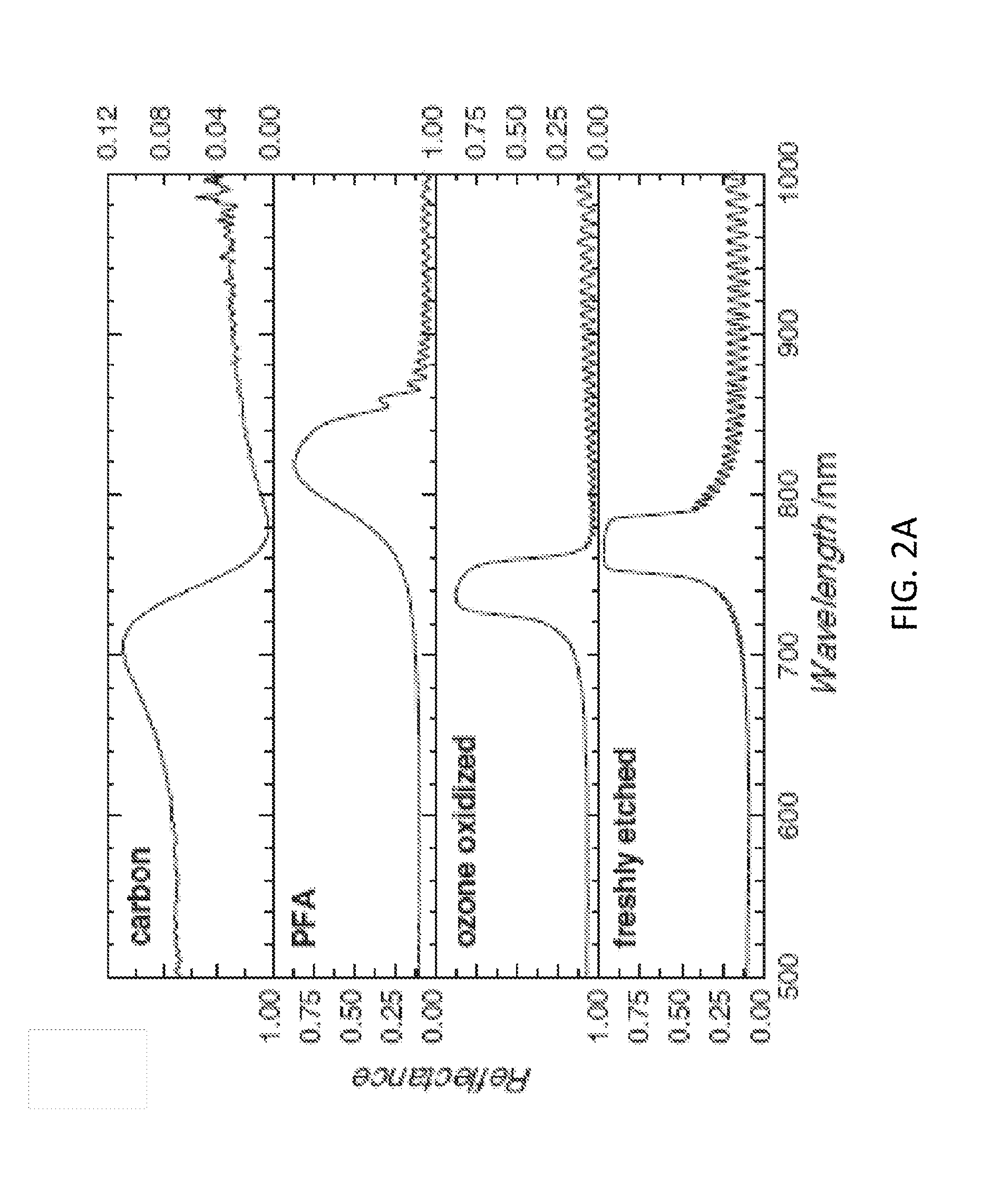Carbon and carbon/silicon composite nanostructured materials and casting formation method
- Summary
- Abstract
- Description
- Claims
- Application Information
AI Technical Summary
Benefits of technology
Problems solved by technology
Method used
Image
Examples
Embodiment Construction
[0016]Preferred embodiment nanostructured materials of the invention include nanostructured carbon / silicon composites and carbon nanofiber arrays. Composites and carbon material of the invention can include photonic structures. Preferred embodiments methods of the invention synthesize nanostructured carbon inside the pores of a porous silicon template by a polymerization and carbonization procedure. In particular preferred embodiments, the porous silicon template is oxidized prior to the polymerization and carbonization procedure, though those procedures can also be conducted on freshly etched porous silicon. Free-standing nanofiber structured carbon can be obtained by dissolution of the porous silicon template. The carbon nanofibers adopt the shape and morphology of the porous silicon template, and can provide a photonic nanostructured material that is stable in liquid. Particles of nanostructured carbon are formed by drying the film. Carbon / silicon composite particles can also be ...
PUM
 Login to View More
Login to View More Abstract
Description
Claims
Application Information
 Login to View More
Login to View More - R&D
- Intellectual Property
- Life Sciences
- Materials
- Tech Scout
- Unparalleled Data Quality
- Higher Quality Content
- 60% Fewer Hallucinations
Browse by: Latest US Patents, China's latest patents, Technical Efficacy Thesaurus, Application Domain, Technology Topic, Popular Technical Reports.
© 2025 PatSnap. All rights reserved.Legal|Privacy policy|Modern Slavery Act Transparency Statement|Sitemap|About US| Contact US: help@patsnap.com



